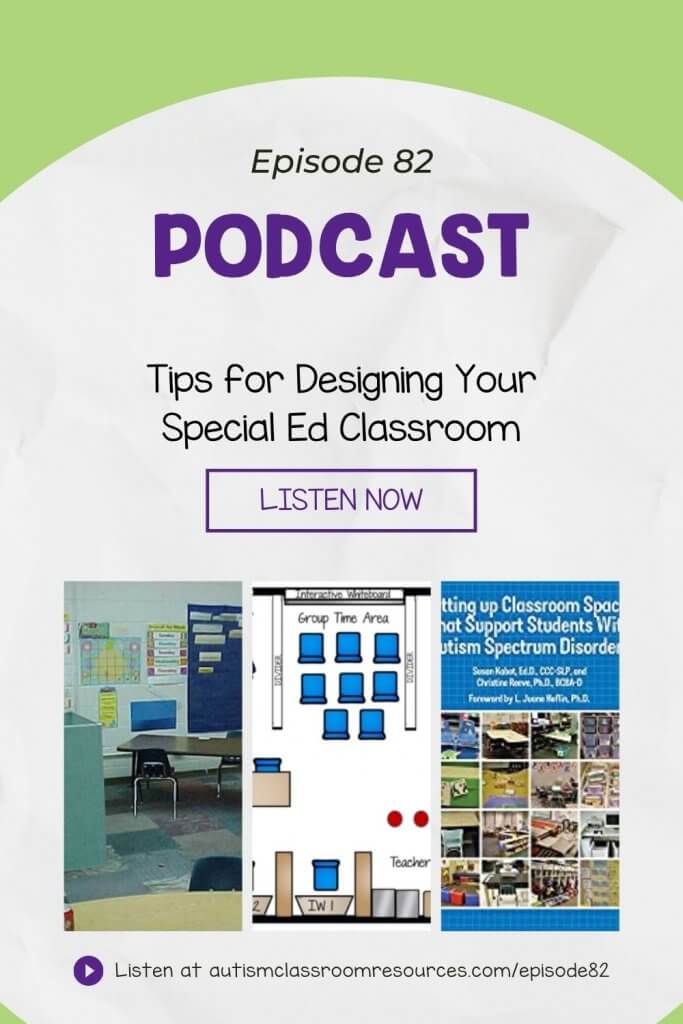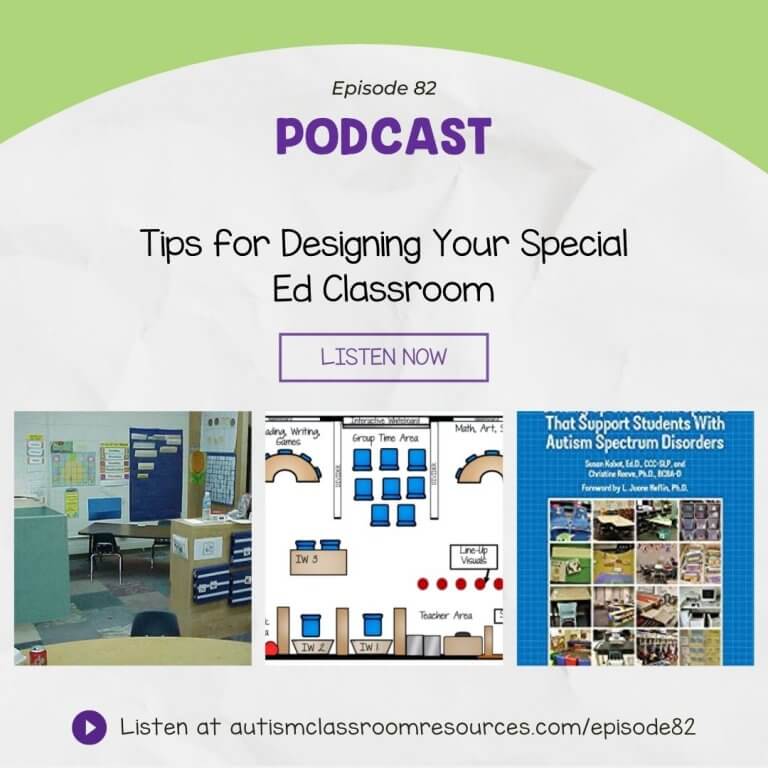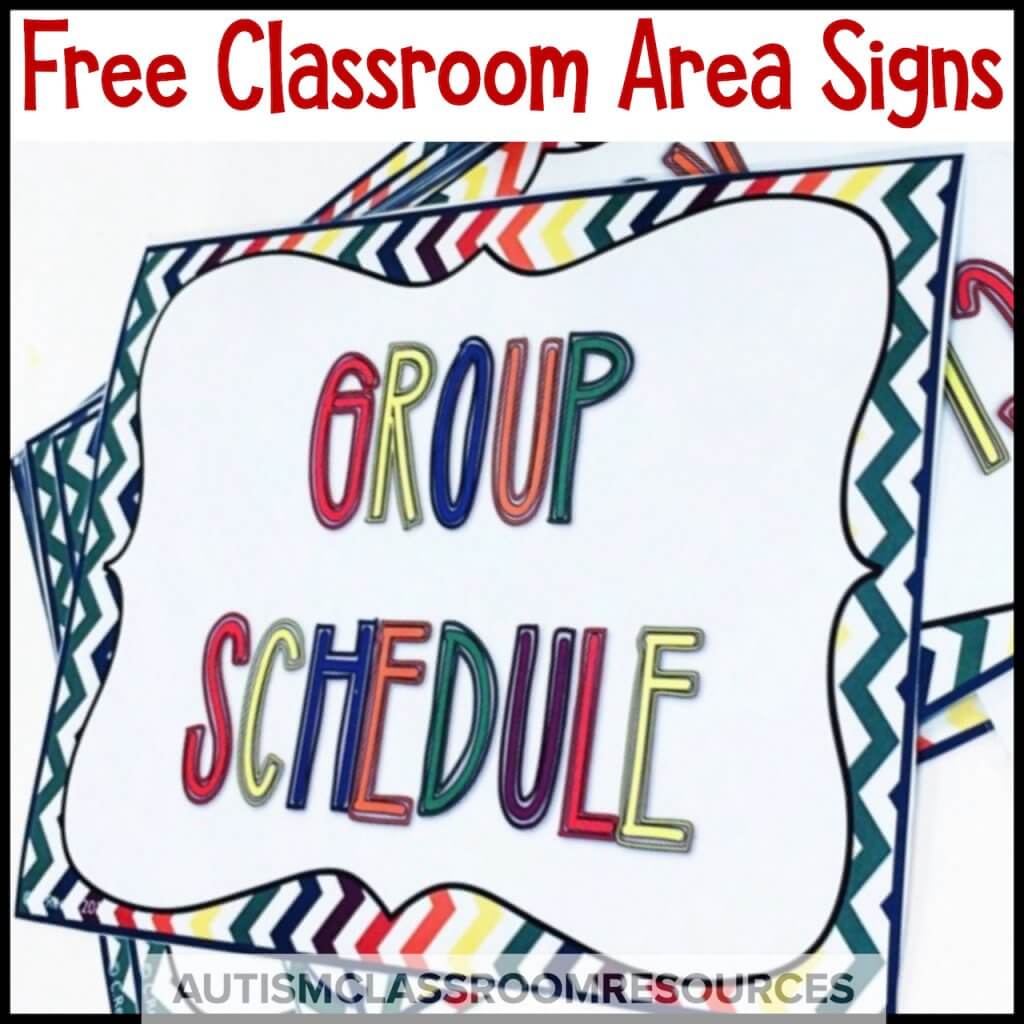Welcome to the Autism Classroom Resources Podcast, the podcast for special educators who are looking for personal and professional development.
I’m your host, Dr. Christine Reeve. For more than 20 years, I’ve worn lots of hats in special education but my real love is helping special educators like you. This podcast will give you tips and ways to implement research-based practices in a practical way in your classroom to make your job easier and more effective.
Welcome back to the Autism Classroom Resources Podcast. I am Christine Reeve and I’m your host. I’m glad that you are joining us as we move through our series on designing individual educational programs through classroom design and organization. I know I keep calling the series something different but there are so many angles to look at it from. Essentially, we’re talking about what I call the CORE model that I talked about in Episode 80 and working through the fundamental structure of the classroom to support the instructional components.
In Episode 80, I talked about the classroom model and you can hop over to that post, and see the CORE model if you want at autismclassroomresources.com/episode80. But essentially, the CORE stands for Classroom Organization Results in Effectiveness. What it demonstrates is that you have to have a strong core as the structure of your classroom in order to be able to implement the educational, vocational, life skills, social, emotional, behavioral, and other intervention strategies that we need to implement as part of the IEP and curriculum. No wonder we’re so tired at the end of the day. That’s the long list.
Essentially, that’s a really long way of saying you have to have a highly structured classroom to support your teaching if you are teaching in special education. The core you are focused on at the center of the structure starts with the IEP, and the teaching implementation plan that I talked about in Episode 80. Then the schedule is based on that, which is what I talked about last week. Once you have your schedule, now we’re ready to start putting together the actual design or the physical environment of the classroom. In other words, it’s now time to move the furniture.
In this episode, I’m all about the goals of what we need to consider in moving that furniture and setting up the classroom. I’ve got lots of links in this post that goes with this episode because it’s hard for me to explain a floor plan to you in the podcast. But I have plenty of pictures for you with links in this post for the episode at autismclassroomresources.com/episode82. In addition, I’ve got a free download for you to help you provide some visual support within your room as well and I’ll tell you more about that when we get to it. Let’s get started.
Something that I like to start with when I talk about setting up the physical environment of the room is how spaces make you feel. I want you to take a minute and think about your favorite stores where you like to shop. You might have to think back a little bit to where you were last when you were there but think about your favorite department store or grocery store, what were the characteristics you like about shopping at that store and how did those characteristics affect you? I’ll share mine since we really can’t be very interactive on this podcast.
I love Publix grocery stores. I grew up with them and I like them because they’re clean, they’re well lit, and they’re well organized. In fact, I didn’t realize that there were grocery stores, they didn’t have those characteristics until I moved away. Their aisles are wide and they are well marked so I can find things. With few exceptions, they’re set up consistently, so I know where things are in most branches. Now, I want you to think about stores where you don’t like to shop and how those stores make you feel when you have to go there. Again, you’re stuck with hearing mine but think about yours.
I know that some of you probably had T.J. Maxx, Marshalls, and stores like that in your places that you love to shop and they end up in my places that I don’t like so much. I don’t hate them but they aren’t my favorite. The reason is because I find it so hard to find things. I know that some people love the challenge of hunting through all the clothes to find the bargain, but to me, that seems like a lot of work to have to find clothes. I like to find clothes. I really like to find them in catalogs and order them but I like to see them organized in racks of similar ones, reach in, and get my size. I don’t want to find something that I like, then discover that there’s no way they have one that will fit me because they only have two of them. I find it really frustrating when they don’t have all the sizes. I get really frustrated when things aren’t organized in a way that I can find them and that things get messy, which is funny when you think that I’m pretty much a clutter bug at home but it’s actually pretty funny that I don’t want that in a store. I actually don’t want it in a classroom either. It makes me tired and I don’t want to stay there.
Why is this exercise important? Because stores are actually a lot like classrooms. The same elements in a store that make you feel good will make people feel good in a classroom. While we have different levels of tolerance for things, like hunting for bargains, we probably all like well-lit stores, organized stores, places that aren’t overcrowded with people. But our tolerance for that will differ based on each of us. Stores that aren’t dirty and where the material is where it’s supposed to be, so we can find it, those are all elements that we want in a classroom as well. But again, the tolerance will differ based on what we’re trying to get out of that store.
One of the things I also talked about in the previous episode was that high levels of engagement is a Highly Leveraged Practice from the Council for Exceptional Children (CEC). The physical environment plays a large role in that. We have to make sure that we’re designing the classroom to support that engagement. For instance, if we have too much open space, students are likely to run around. If we have too many students crowded together, we’re likely to get challenging behavior. The physical space affects how students respond to it with their behavior and their engagement.
Here are the overall goals of what we want to make sure we have put in place in our well-designed classroom, then I’ll talk about some of the specifics of what you want to do in order to meet these goals, then I’ll talk a little bit about what you’ll find in the blog post, which has tons of tours, pictures, and things. We are trying to create a classroom that creates an environment of predictability and stability to enhance skill acquisition and get good participation. We’re trying to set up areas of the classroom based on the needs of the student, so we’re going to take our teaching implementation plan and make sure that our classroom matches up with those student’s needs. We want to develop areas of our classroom that are clearly defined for specific activities and that are of a good size for the number of students, and what we want to do there, that have very clear cues to students and staff about what we expect them to do there, and that allow a teacher to look out across the room and supervise all the different students. So you want to be able to look across the room and not have students back in a corner where you can’t see them.
We want to create classroom areas that support the targeted skills that we’ve put in our schedule. We want to have areas that limit distractions, so we don’t want to put our instructional areas next to the computer area with sound blaring or something like that. We want to create environments that increase engagement and prevent challenging behavior. We want to make sure that we are fostering student independence at navigating the classroom, so we want to make sure that we have a room that flows well, so that students are able to find their way around and get through their routine as independently as possible. We want to create workspaces to promote engagement in the gen ed class, as well as in the special ed class. Remember that we have to think about these principles there as well.
To do this, we have to make sure of a few things. We have to make sure that we have areas of the classroom with clearly defined boundaries. Because for many of our students with autism and other special ed needs, some of them are going to be okay if the flooring changes to know that’s where an area stops or if there’s tape on the floor. But some of them are going to be kids that I think of as, “I have to run into the furniture to know that’s where I’m supposed to stop.” They need physical barriers, so we use a lot of dividers, we use furniture to set up boundaries for them. Those become very important, not that we have to have boundaries every single five feet but that we have to have structure to those areas.
Second, we have to have clear visual cues of what’s expected, so seated facing the teacher means, “I’m going to get instruction from the teacher, that I’m going to have an area where I work by myself and that’s where I’m seated without the teacher.” We want to make sure that we’re sending the right message through our visual cues about what we want the student to do. If I’m at the snack table and you put pudding on the table, expect me to eat it, not play with it as art. Whereas if we’re at the art table, if we put the pudding down, maybe it can be an art material. That’s an iffy thing.
I had a teacher one time who knew that she needed to have structure in her room and knew that she needed to have material and furniture so that she didn’t have big open spaces. She solved the problem by the only thing she could find to take up space in her room, it was one of those big cubes that you see on a playground with a slide and a climbing structure. She had that in the middle of her classroom. Not surprisingly, her kids spent a lot of time climbing on that and having to be told to get down as they were transitioning around the room. Maybe, if we don’t want the kids to act like the classroom is the playground, maybe we don’t put playground equipment in the classroom because that’s the message that we’re sending.
Sometimes, the visual cues are our furniture. Sometimes, the visual cues are our visual cues. I actually have some visual signs in the Resource Library for you that you can grab and I’ll tell you about that at the end of the episode. Another is to separate noisy from quiet areas. Think about the areas where you want your students to concentrate and maybe they don’t go right next to the areas where you’re doing music and movement or you’re doing a lot of sensory kinds of stuff.
Another is to make sure that your activities are transitioning in an orderly manner. I’ve had to fix many a schedule that I’ve done and thought that were perfect, and when somebody said, “The children are zigzagging across the room. Why, when they could just move in a clockwise fashion around the classroom?” Because I wasn’t thinking about where things were in the room when I set up the order of the activities. Okay, we can fix that. We have to think about that. Let’s make sure they’re not running into each other, that they’re not all on top of each other. Are they moving through the room in a way that makes sense? Because that will increase their independence at being able to navigate their environment.
We want to make sure that our activities in our areas are age and developmental appropriate. We want to make sure our materials are age and developmentally appropriate. We want to make sure that we have a play area in our schedule when we’re talking about preschool. But we don’t have a play area in our schedule when we’re talking about middle school because it doesn’t make sense. It’s not age respectful. It’s not what we would expect to see in middle school.
Finally, we want to make sure that our areas of our classroom fit the size of the group that we have in our classroom because we don’t want an area that’s so small, that there’s a lot of crowding because when you put too many children, people, whoever they are, on top of each other, you’re going to create problem behavior. Similarly, we don’t want big open spaces because when we have too much open space, we have too much space and they move around too much. We want the Goldilocks of areas for groups, and it does take some trial and error to get there sometimes.
Make sure that you hop over to the blog post at autismclassroomresources.com/episode82 and you will be able to check out links of posts with all different types and ages of classrooms that have pictures and floor plans. There’s even some really extensive preschool tours, video tours there. There’s also a link to a freebie in the Resource Library of classroom signs that help just identify areas of the classroom, because remember that our visual cues are important for our students but they’re also important for our staff. That’s important because next week, we’re actually going to be talking about managing staff and staff zoning. It’s important that our staff is able to navigate the room independently without having to constantly check back with questions as well. Just go to autismclassroomresources.com/episode82 and you will be able to sign up for the newsletter that’ll get you more free stuff, get you in to download those as well.
If you’d like more help in setting up your physical environment, preparing your schedule or just in getting back to school this year, come join us in Special Educator Academy where we are running a study group to walk together through my setting up classrooms to maximize engagement course. It helps you set up your classroom to meet all these different goals. The course is available on demand whenever you want to do it at your own speed. It also includes two of my toolkits from TPT for setting up the tip and the schedule, as well as another one for working with staff. But this summer, we are working together with challenges and discussions to go through the course as a group and support each other in planning out everyone’s classroom. It just makes it a little easier and a little bit more fun when you have others to lean on, and get ideas from. You can join with a seven-day free trial at specialeducatoracademy.com.
I’d love to hear your questions about setting up the classroom too, so if you’re in the academy and you join us for a seven-day free trial, come to our private Facebook group and share there. If not, definitely head over to our free Facebook group at specialeducatorsconnection.com.
Thank you so much for listening. I hope you’ll come back next week when I’ll be talking about choreographing your classroom and working with staff. Until then, I’ll just be here looking for my latest favorite clothes catalogs because for some reason, I feel like shopping.









